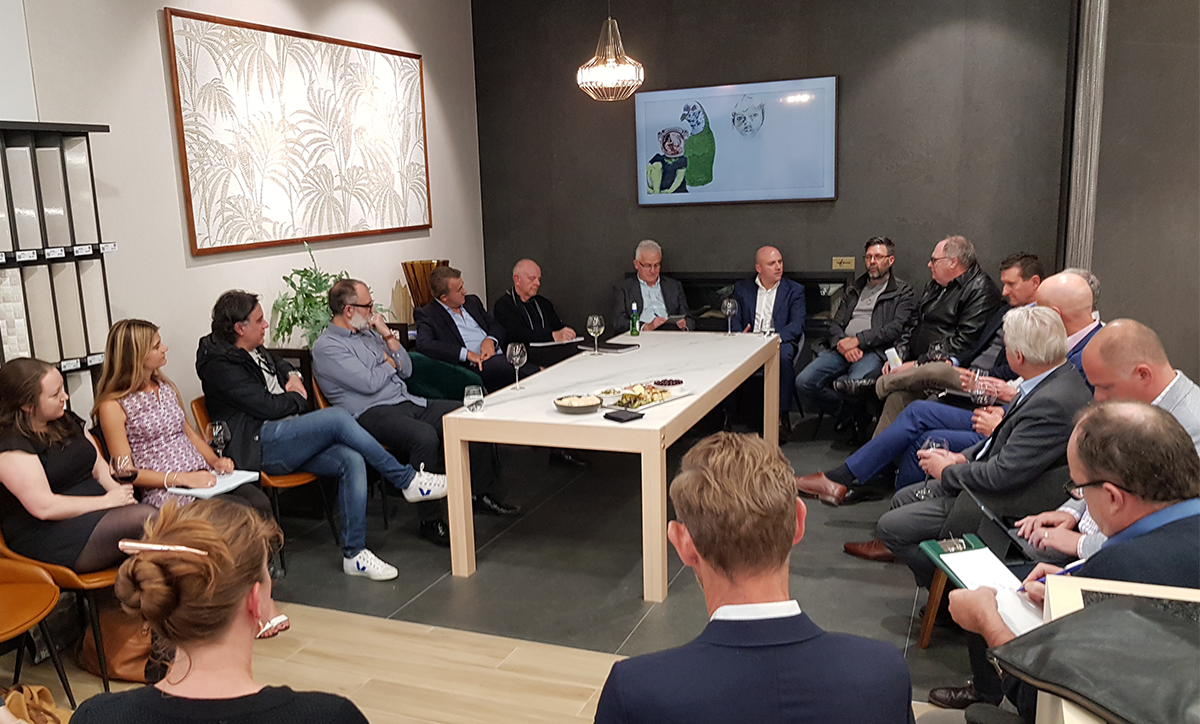Builders and Architects Have Their Say

Architects and builders talked novation at a recent roundtable discussion in South Australia, agreeing that early, meaningful collaboration and communication can only lead to better outcomes. Mario Dreosti recaps the main points of the discussion.
On Wednesday 15 May, the South Australian branch of the ACA held a roundtable forum between architects and builders. Beaumont Studios hosted the event at their new South Australian showroom and the topic for conversation was novation.
It soon became clear that novation is not a conversation in isolation. The act of novation cannot be discussed without referencing the nature of the contract under which the novation occurs, and then further, the project ambitions and culture that have led to the use of that contract. What was also quickly evident was the wealth of knowledge and experience around the fairly rectangular roundtable.
The benefits of, and structures around different procurement approaches – including various forms of Alliance or ECI or D+C – were largely shared across the design and construction divide through real-life experience.
The contemporary construction industry is incredibly complex. It involves almost all disciplines of engineering, the arts of consultation, resource management, design, manufacturing and logistics, and the list goes on. It makes perfect sense then that earlier, deeper collaboration between these multiple inputs would lead to better outcomes. It makes sense that it is only through experience that we can understand the pitfalls and nuances.
Set against that backdrop the conversation made it clear that debating at what ‘percentage’ novation should occur, or with what levels of contract administration services it should proceed, is somewhat irrelevant unless these matters are considered in the context of a very clear project vision and a contractual framework established to deliver that vision.
Here members of the forum unified to note that the principles behind which a contract approach is set for construction projects is far too often determined by people who are not professionals in the construction industry. Furthermore, clients have been misguidedly encouraged to focus on competitive financial tension and the transfer of risk as the two primary performance measures for a construction contract.
Put as a simplistic anecdote, competitive tension in pricing of a steel-framed building in an overheated steel market seems a little pointless if an ECI model could have raised this and informed a concrete direction that for argument’s sake may save three times the margin achieved through tender compression of the steel price.
Challenging the myth that contractors substitute to stretch margins, it was pointed out that the transfer of price risk late in design completion (as is often advised to maintain design intent) can be a cause for change. Without the ability to inform and be informed earlier in the design process, contractors often discover costly items once already burdened with price risk and then need to manage these through changes later in the process.
So, what about novation? That was the topic after all.
Well, it was agreed that novation is nothing to be scared about if the project set up, the timing and the scope of services are clearly articulated and, most importantly, aligned with a project vision.
Contractors noted the increasing importance of the design manager role so that they can meaningfully engage in the design conversation – which is actually another job opportunity for architects. Architects, meanwhile, noted the importance of a service contract, which actually defines a novated scope rather than just adding a deed to a scope written for traditional services.
The real message of the roundtable discussion, however, was to make some noise.
Those of us who actually design and build and deliver under construction contracts should be speaking widely and broadly with our clients and their legal and financial advisors. We should be sharing our knowledge to help them appreciate the importance of clarity in project aspiration, briefing and performance measures, and then tailoring procurement (including novation) to suit those ambitions.
We know that very few of our clients would actually measure the success of their projects on the basis of them achieving the lowest fixed price. We know that our clients actually have ambitions and aspirations for their project that are far higher.
Our rectangular roundtable agreed that step one in successful novation is to educate our clients about how to brief and contract for the outcomes they actually want.
Mario Dreosti is the Managing Director of Brown Falconer and Vice President of the ACA – SA Committee.
